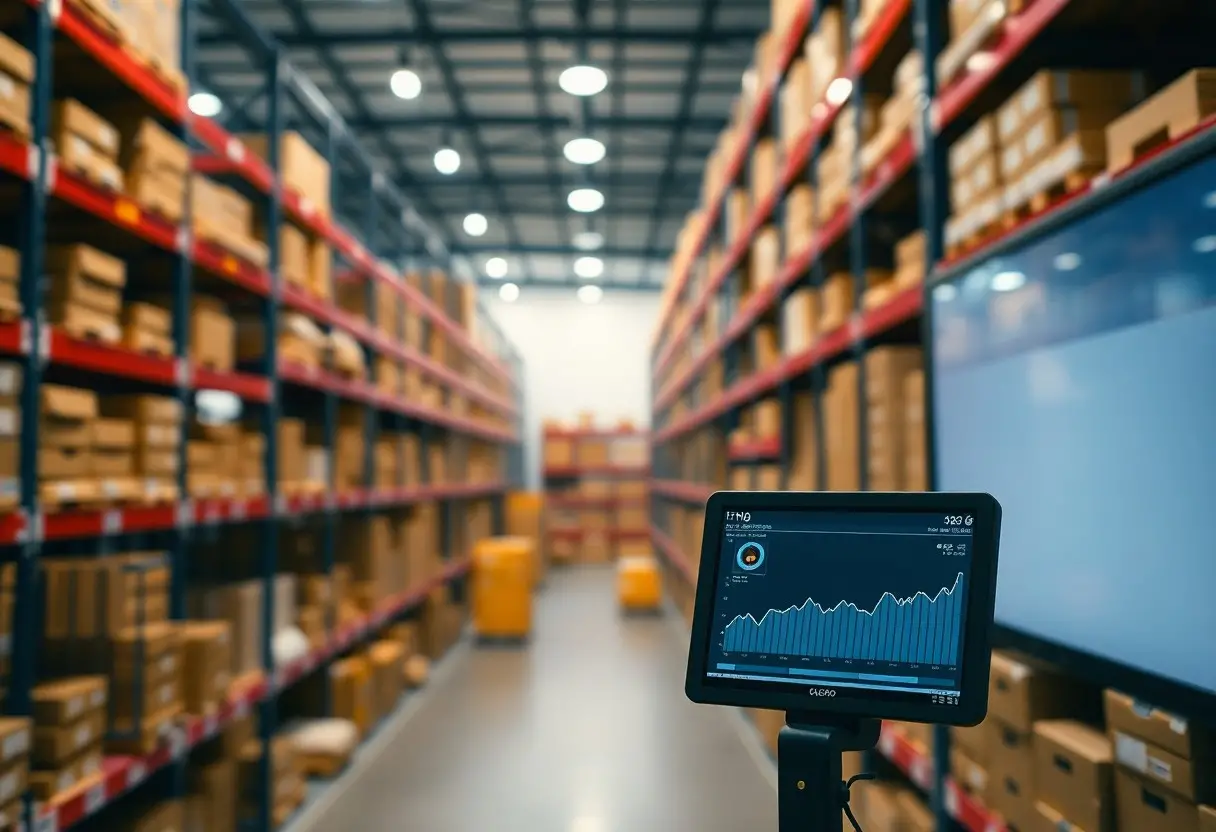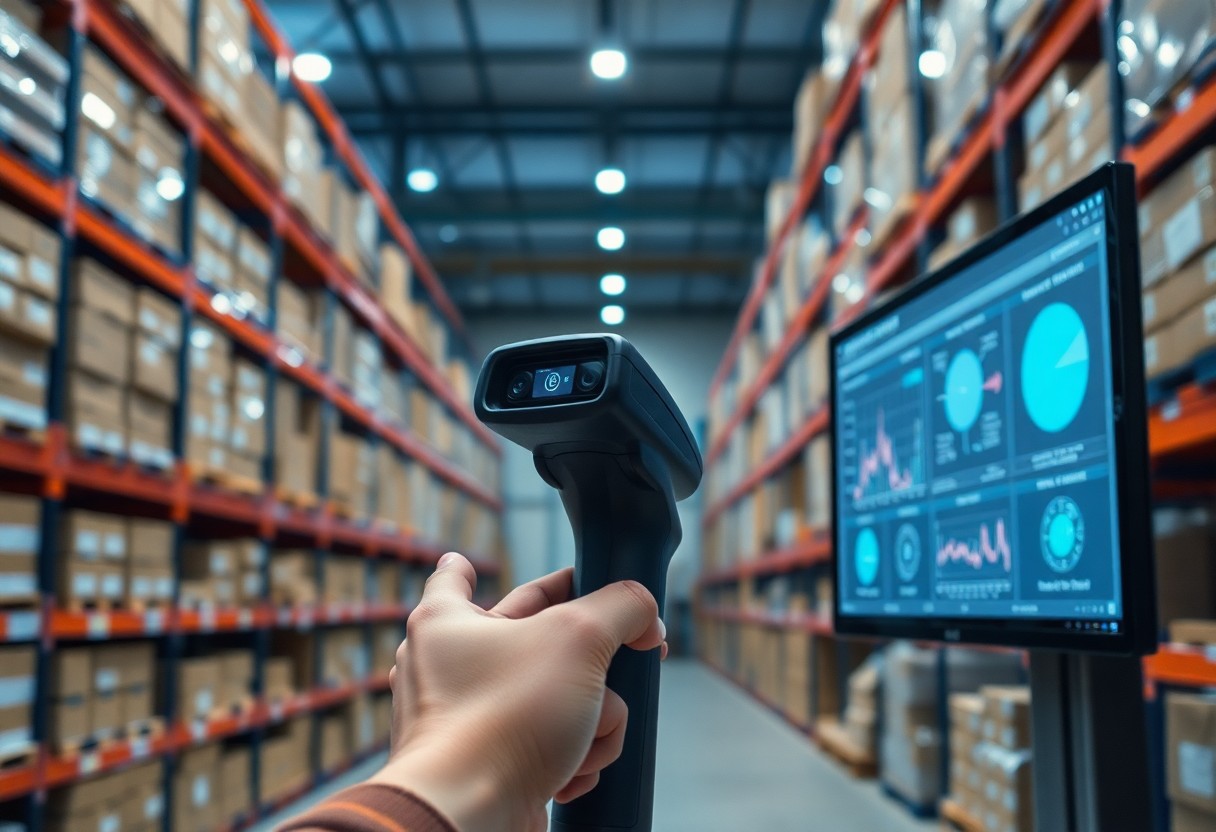Most businesses struggle with effective inventory management, leading to increased costs and poor customer satisfaction. By integrating RFID technology with machine learning algorithms, you can significantly enhance your inventory processes. This powerful combination not only allows for real-time tracking of products but also provides insights that enable you to make informed decisions about stock levels and demand forecasting. In this blog post, you will discover how these technologies work together to streamline your inventory management and boost your operational efficiency.
Overview of RFID Technology
Before delving into the specifics, it’s crucial to grasp the foundation of RFID technology. RFID, or Radio Frequency Identification, is a wireless communication method that uses electromagnetic fields to automatically identify and track tags attached to objects. This innovative technology enhances visibility and efficiency in inventory management by providing real-time data that allows you to make informed decisions on stock levels and movement.
Definition and Functionality
Above all, RFID technology consists of tags, readers, and a backend system. The tags, which contain a chip and antenna, are attached to items, while readers emit radio waves to communicate with the tags. When activated, the tags transmit their stored information back to the reader, which then relays the data to your inventory management system for analysis and tracking.
Benefits of RFID in Inventory Management
RFID technology significantly enhances your inventory management processes. By providing real-time visibility and automating data entry, RFID reduces human error and streamlines operations, which ultimately saves you time and resources.
Indeed, the advantages of RFID extend far beyond mere tracking. You can increase accuracy in inventory counts and access real-time data, enabling informed decision-making. With RFID, you also experience improved efficiency in stock management, leading to diminished losses due to theft or misplacement. Furthermore, RFID technology can reduce labor costs associated with manual scanning, as automated systems require less manual intervention. This comprehensive data integration leads to better forecasting and enhanced customer satisfaction, allowing you to stay ahead of market demands.
Fundamentals of Machine Learning
The fundamentals of machine learning involve algorithms and statistical models that enable computers to learn from and make predictions based on data. By leveraging large datasets, these systems can identify patterns and improve their accuracy over time. Understanding these foundations will empower you to harness machine learning technologies effectively in your inventory management processes.
Key Concepts and Techniques
Machine learning encompasses various techniques, including supervised learning, unsupervised learning, and reinforcement learning. Supervised learning utilizes labeled datasets to train models, while unsupervised learning discovers hidden patterns in unlabeled data. Reinforcement learning, on the other hand, involves agents learning to make decisions through trial and error, optimizing their actions to achieve specific goals.
Role of Machine Learning in Inventory Optimization
Machine learning plays a significant role in optimizing your inventory management processes. By analyzing historical sales data, predicting future demand, and adjusting stock levels accordingly, you can ensure that your inventory is aligned with customer needs.
Even as businesses face challenges like fluctuating demand and supply chain disruptions, implementing machine learning algorithms can lead to improved forecasting accuracy and reduced holding costs. By enabling real-time analytics and automated decision-making, machine learning helps you maintain the right balance between stock levels and customer satisfaction. Investing in this technology not only streamlines operations but also enhances your competitive edge, positioning your business for long-term success in a dynamic market.
Integrating RFID and Machine Learning
Assuming you are looking to enhance your inventory management system, integrating RFID technology with machine learning can streamline operations effectively. This synergy allows you to collect vast amounts of data while gaining insights that foster better decision-making. By combining real-time data from RFID systems with the predictive capabilities of machine learning, you position your business to meet demand more efficiently and react swiftly to market changes.
Data Collection and Analysis
For your inventory management strategy, collecting data through RFID tags offers visibility into stock levels and item movements. By analyzing this data, you can identify trends, optimize restocking processes, and reduce errors. Machine learning algorithms can further process this information, uncover patterns, and generate insights that drive better inventory decisions, ensuring that you maintain the right balance of products.
Real-time Tracking and Forecasting
Against the backdrop of traditional inventory management methods, the integration of machine learning with RFID technology enhances your ability to track items in real-time. This results in significant improvements in supply chain responsiveness and operational efficiency.
Forecasting demand becomes more effective with RFID and machine learning working in tandem. You can utilize real-time data to generate accurate forecasts, eliminating potential stockouts or overstock situations. This approach not only enhances customer satisfaction but also minimizes waste and costs associated with excess inventory. Equipped with these predictive insights, you can proactively manage your inventory, ensuring that your operations run smoothly and that your customers receive the products they need when they need them.
Case Studies
Now, several organizations have successfully utilized RFID and machine learning to enhance their inventory management. Here are some illustrative examples:
- Company A saw a 30% reduction in stock discrepancies after implementing RFID tracking.
- Retailer B reported a 25% increase in inventory turnover rates with machine learning algorithms predicting demand.
- Warehouse C decreased order fulfillment time by 40% through integrating RFID with real-time data analytics.
- Manufacturer D improved overall efficiency by 35%, leading to significant cost savings through automated stock monitoring.
Successful Implementations
Among the various case studies, you’ll find that organizations achieved remarkable outcomes through their strategic use of RFID and machine learning. These implementations not only streamlined operations but also led to substantial financial gains, positioning them effectively in competitive markets.
Lessons Learned
After analyzing several cases, you can glean valuable insights into what works and what doesn’t in the world of RFID and machine learning. Adaptability and continuous improvement are crucial in reaping the benefits of these technologies.
Consequently, organizations discovered that user training plays a significant role in the efficacy of RFID systems. You should ensure your staff is well-versed in both the technology and its application. Another key takeaway is the importance of consistent data validation; having up-to-date information is vital for achieving optimal results. Additionally, integrating existing systems with new technology ensures a smoother transition and enhances overall performance. These lessons emphasize that careful planning and commitment to learning will lead to better inventory management outcomes.
Challenges and Limitations
Unlike the seamless integration one might expect, RFID and machine learning face various challenges that can hinder effective inventory management. Issues such as high implementation costs, technology reliability, and data management obstacles can complicate the transition. Additionally, the need for skilled personnel to interpret the data generated adds another layer of complexity. These factors may deter businesses from adopting these technologies fully.
Technical and Operational Hurdles
An effective deployment of RFID technology is often challenged by technical issues like signal interference, hardware compatibility, and the need for proper tagging of items. Operational barriers, such as employee training and resistance to change, can also impede the adoption of these advanced systems. These challenges can lead to inefficiencies in your inventory processes and negatively impact overall productivity.
Mitigation Strategies
Mitigation strategies are vital for overcoming the obstacles associated with RFID and machine learning in inventory management. Implementing a phased rollout allows you to acclimate to the technology gradually while minimizing disruption. Providing comprehensive training and support to your staff will enhance user adoption and confidence in the system. Additionally, conducting preliminary assessments to identify potential technical roadblocks can ensure a smoother implementation process.
Due to the complexities of implementing RFID and machine learning in inventory management, it is imperative that you develop and adhere to effective mitigation strategies. This includes forming a dedicated team to oversee the implementation process, engaging with reliable vendors for technical support, and setting up feedback mechanisms for employees. By actively addressing operational barriers and investing in proper training programs, you can significantly improve user acceptance and ensure that the transition to these technologies enhances your inventory processes rather than complicates them. Ultimately, a proactive approach will lead to improved efficiency and a positive return on your investment.

Future Trends
Despite the current advancements in RFID and machine learning, the future holds even more potential for revolutionizing inventory management. As technology continues to evolve, businesses will benefit from increasingly sophisticated algorithms and more efficient RFID systems, which will enhance real-time data collection and analysis capabilities. This will not only streamline processes but also enable organizations to make data-driven decisions faster and more accurately.
Innovations in RFID and Machine Learning
At the cutting edge of RFID and machine learning, innovations are emerging that can vastly improve how businesses track and manage inventory. Enhanced algorithms will enable predictive analytics, allowing you to anticipate stock needs while minimizing excess inventory. Additionally, smarter RFID tags equipped with sensors will provide you with comprehensive data on product condition and location, further optimizing your supply chain operations.
The Impact on Supply Chain Management
With the integration of RFID and machine learning, your supply chain management practices will transform into highly efficient systems that boost productivity. This synergy fosters real-time visibility into inventory levels, reducing delays and enabling proactive decision-making.
Consequently, this transformation leads to a more responsive and agile supply chain that can adapt to changing market demands. Improved accuracy in inventory tracking minimizes human error, while data-driven insights optimize procurement and distribution strategies. As a result, you can significantly reduce operational costs and enhance customer satisfaction by ensuring timely deliveries and product availability. Adopting this technology not only streamlines your processes but positions your business for long-term success in a competitive market.
Summing up
As a reminder, integrating RFID technology with machine learning can significantly enhance your inventory management process. By automating tracking and analyzing data in real-time, you can optimize stock levels, reduce errors, and improve overall efficiency. Adopting these advanced technologies allows you to make informed decisions, ensure product availability, and streamline operations, ultimately saving time and costs. Embracing RFID and machine learning not only modernizes your inventory practices but also positions your business for sustainable growth in a competitive environment.




